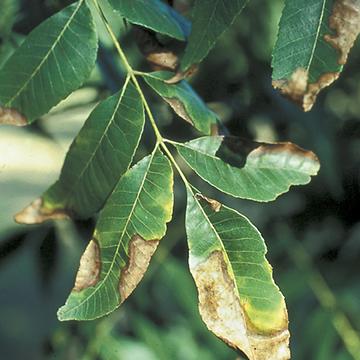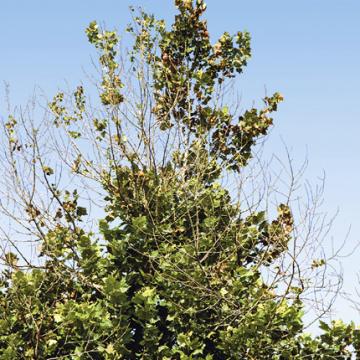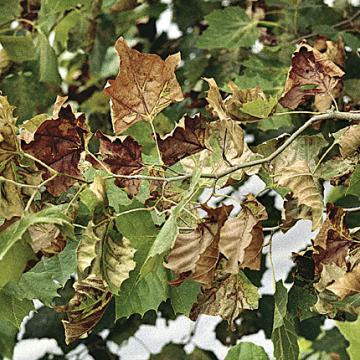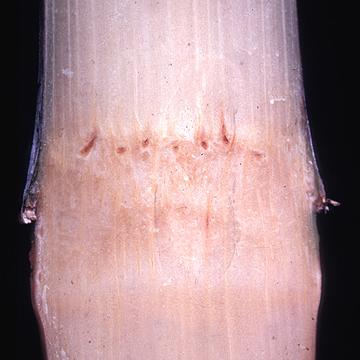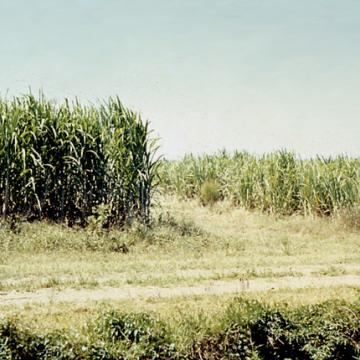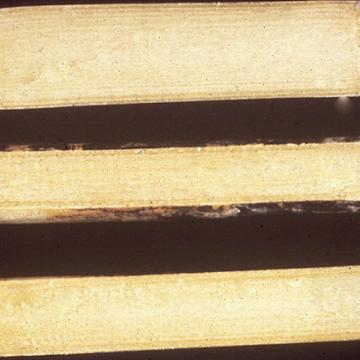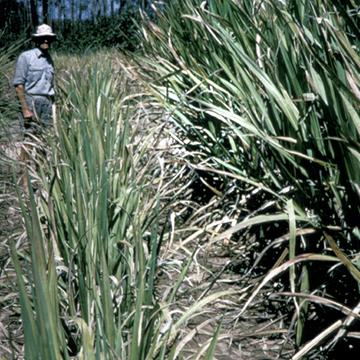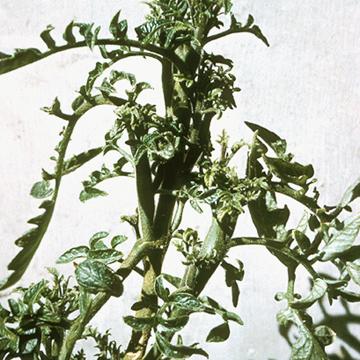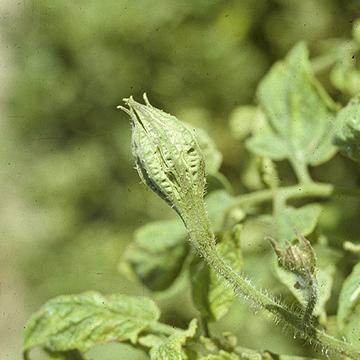DISEASE: Bacterial leaf scorch
HOST: Pecan
Pecan with necrotic scorched leaves with distinct dark lines between healthy and diseased tissues.
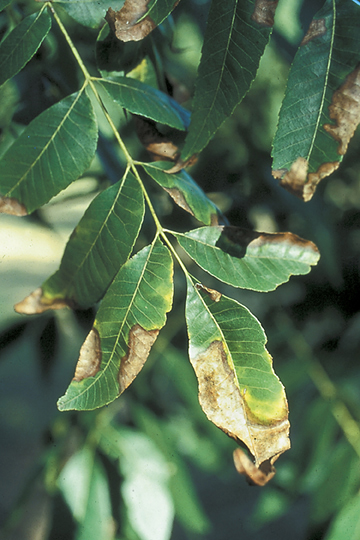
Bacterial leaf scorch | Pecan
DISEASE: Bacterial leaf scorch
HOST: Pecan (Carya illinoinensis)
PATHOGEN: Xylella fastidiosa
SOURCE: T. Brenneman
DISEASE: Bacterial leaf scorch
HOST: Sycamore
Sycamore with scorched leaves and dieback of small branches.
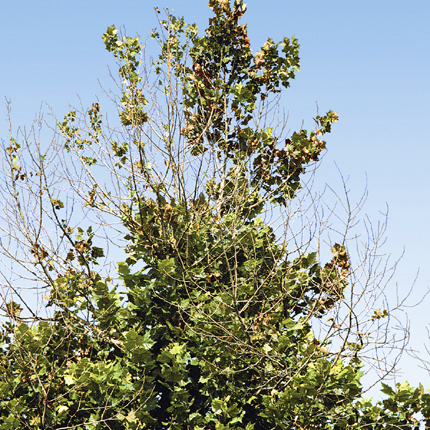
Bacterial leaf scorch | Sycamore
DISEASE: Bacterial leaf scorch
HOST: Sycamore (Platanus occidentalis)
PATHOGEN: Xylella fastidiosa
SOURCE: W. Sinclair
DISEASE: Bacterial leaf scorch
HOST: Sycamore
Close-up of scorched leaves.
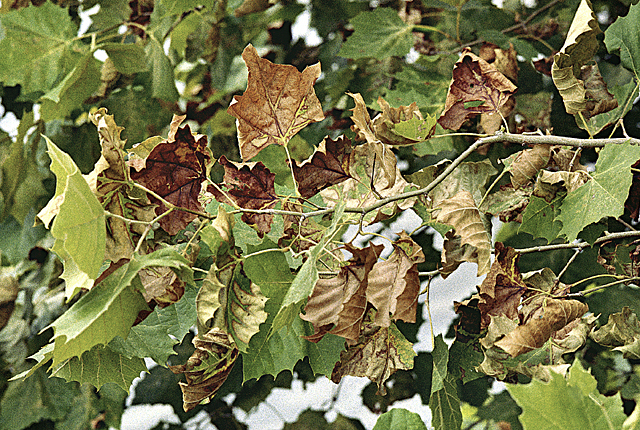
Bacterial leaf scorch | Sycamore
DISEASE: Bacterial leaf scorch
HOST: Sycamore (Platanus occidentalis)
PATHOGEN: Xylella fastidiosa
SOURCE: W. Sinclair
DISEASE: Ratoon stunt
HOST: Sugarcane
Necrotic, reddish vascular bundles in node of sliced stalk, a diagnostic symptom.
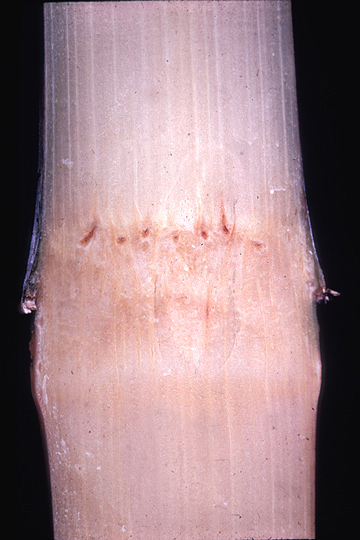
Ratoon stunt | Sugarcane
DISEASE: Ratoon stunt
HOST: Sugarcane (Saccharum officinarum)
PATHOGEN: Leifsonia xyli subsp. xyli
SOURCE: D. Teakle
DISEASE: Ratoon stunt
HOST: Sugarcane
Disease of susceptible cultivar L62-96 (right). External symptoms are characterized by stunting and poor growth.
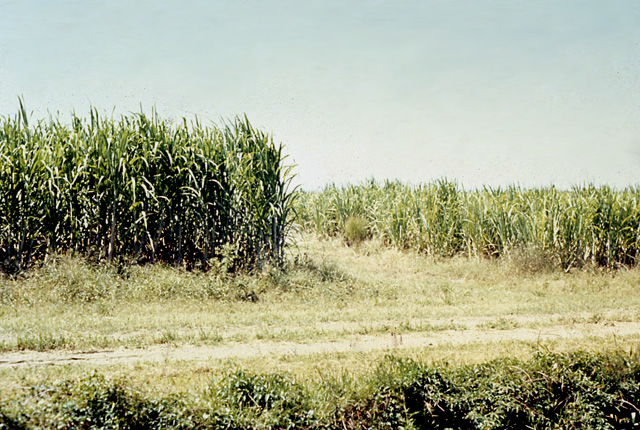
Ratoon stunt | Sugarcane
DISEASE: Ratoon stunt
HOST: Sugarcane (Saccharum officinarum)
PATHOGEN: Leifsonia xyli subsp. xyli
SOURCE: A. Gillaspie, M. Davis
DISEASE: Ratoon stunt
HOST: Sugarcane
Red discoloration just below nodal tissues is a symptom in mature stalks of 'L41-233'.
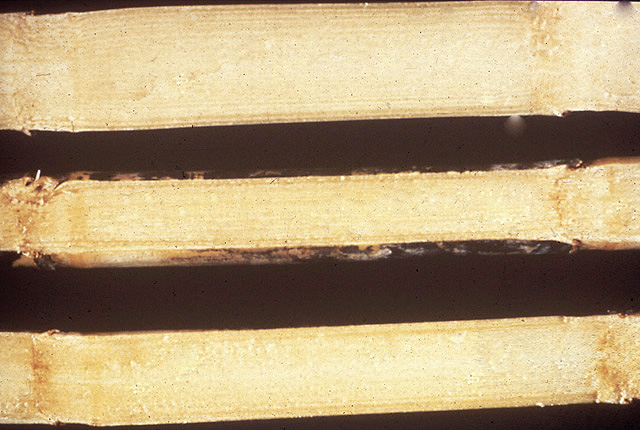
Ratoon stunt | Sugarcane
DISEASE: Ratoon stunt
HOST: Sugarcane (Saccharum officinarum)
PATHOGEN: Leifsonia xyli subsp. xyli
SOURCE: A. Gillaspie, M. Davis
DISEASE: Ratoon stunt
HOST: Sugarcane
Row of disease 'Trojan' plants (left). Healthy row (right).
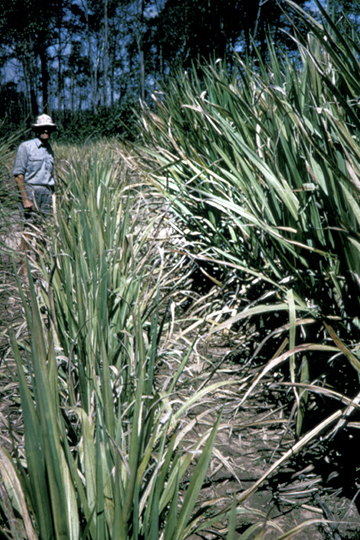
Ratoon stunt | Sugarcane
DISEASE: Ratoon stunt
HOST: Sugarcane (Saccharum officinarum 'Trojan')
PATHOGEN: Leifsonia xyli subsp. xyli
SOURCE: D. Teakle
DISEASE: Tomato big bud
HOST: Tomato
Characteristic symptoms are swollen, apical stems and stunted leaves. Apical stems are generally thickened and assume a stiff and erect growth habit. Internodes are shortened and flower buds are greatly enlarged.
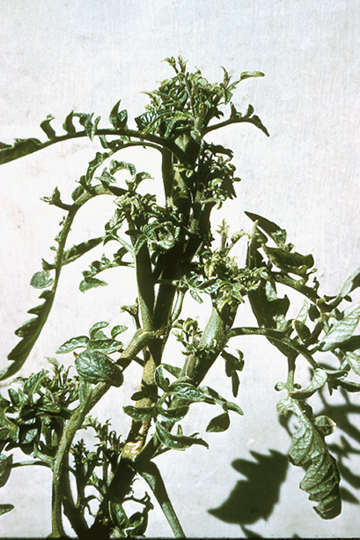
Tomato big bud | Tomato
DISEASE: Tomato big bud
HOST: Tomato (Lycopersicon esculentum)
PATHOGEN: 'Candidatus Phytoplasma asteris'
PATHOGEN SYNONYM: Phytoplasma Aster yellows group
SOURCE: D. Teakle
DISEASE: Tomato big bud
HOST: Tomato
Symptoms are enlarge sepals that do not separate. Flower buds stay green and do not develop into fruit. Leaves are small and chlorotic.
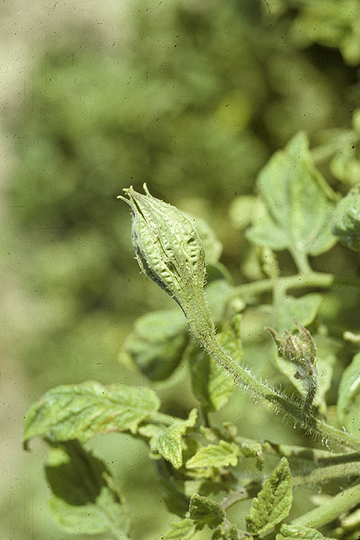
Tomato big bud | Tomato
DISEASE: Tomato big bud
HOST: Tomato (Lycopersicon esculentum)
PATHOGEN: 'Candidatus Phytoplasma asteris'
PATHOGEN SYNONYM: Phytoplasma Aster yellows group
SOURCE: S. Thomson


